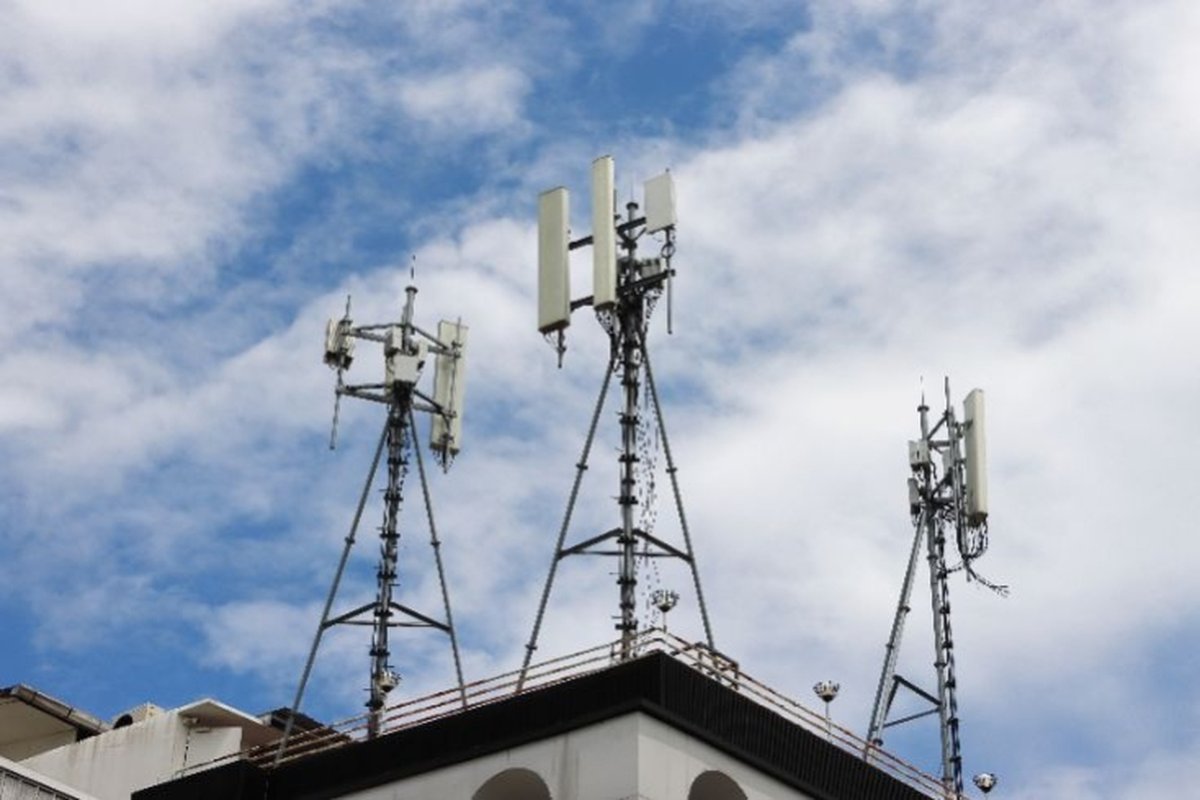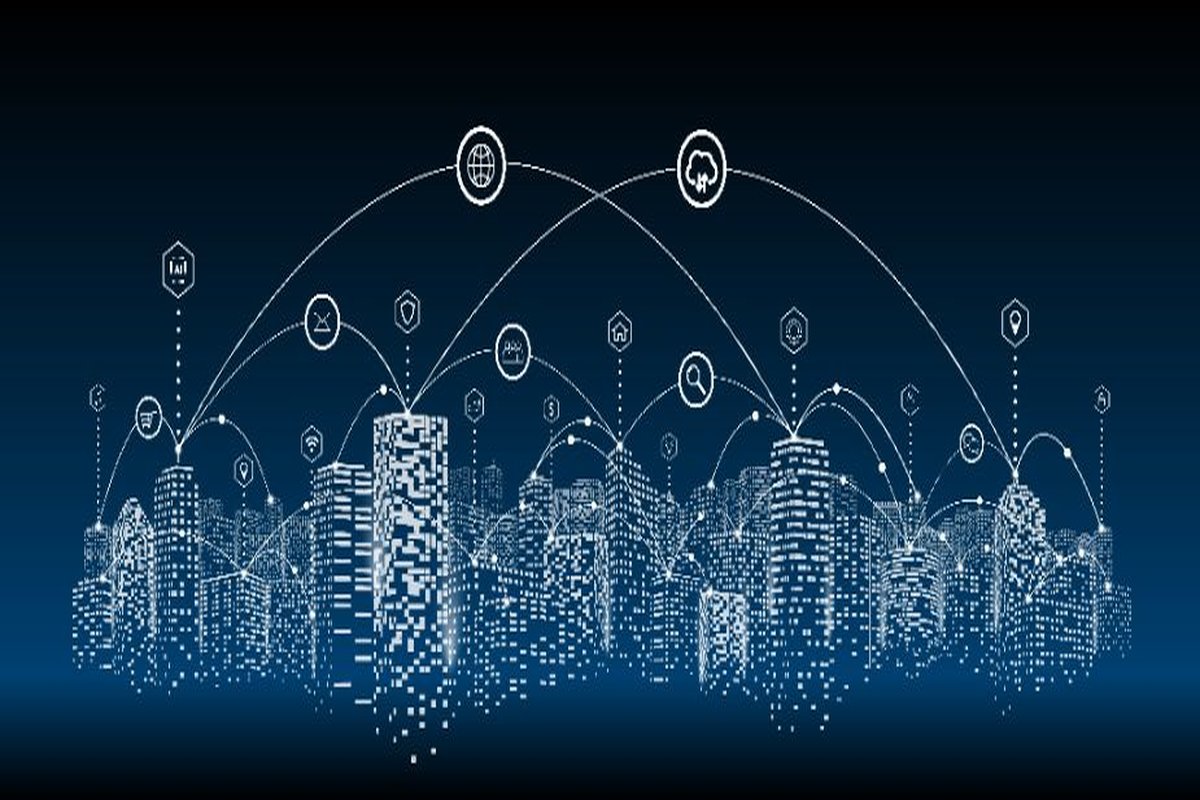Digital technology is just better
In-building cellular coverage is all about distributing cellular signals to where they need to be: users. Traditional analog technology would take the cellular signal source – whether from a BTS (Base Transceiver Station), small cell, or off air – amplify the signal, and push it out over coaxial cable. Coaxial cable is lossy, meaning the signal degrades over the distance of the cable. While cable loss can be reduced by using larger, more insulated cable, these higher performance cables are commensurately harder to work with, stiffer, thicker, and more expensive.
Digital-based in-building coverage systems take the source signal and digitize it. Then the signal is sent (distributed) to where it needs to go over a much lighter-weight medium, like a Category 5 (Ethernet) cable. Also, digital distribution is lossless, meaning none of the signal is lost over the course of distribution.
Some digital systems use fiber for some or all of the signal distribution. Fiber has advantages in the amount of data it can transport versus Ethernet cable, and in the distances it can support between the source and distribution point. It can be kilometers. But fiber is more expensive, harder to manage and install, and the support ecosystem is smaller. While the benefits are numerous, the high cost and complexity of installation makes it an overkill for a middleprise or smaller structure that can get the excellent cellular coverage needed with technology that is less expensive and faster to install using Ethernet cable.
Digitizing a 3G and 4G LTE signal, and remaining within the wireless parameters that enable real-time cellular communications, is very difficult. To do that one needs either a very expensive FPGA (field programmable gate array), or an ASIC (application specific integrated circuit). FPGAs can be purchased off the shelf, but they are very expensive. (The FPGAs Nextivity uses to simulate our chipsets while we’re in development cost $10K each!) The alternative to an FPGA is to develop an ASIC specifically for the purpose, which has massive upfront R&D costs and can take years.
Nextivity is the only company to develop proprietary ASICs to power in-building cellular coverage up to 1,000 times stronger than the analog BDA (bi-directional amplifier) passive DAS/repeaters. Nextivity’s proprietary IntelliBoost chipset is utilized across its entire line of digital cellular coverage solutions.
In CEL-FI QUATRA, the active DAS hybrid that was specifically developed by Nextivity for the middleprise, RF signal is digitized at the system headend (called the Network Unit or NU), managed by the Nextivity chip. Then the signal is distributed across lossless Ethernet cable to remote units (called Coverage Units or CUs) where it is converted back to analog and rebroadcast to users.
Intelligence makes a big difference, too
CEL-FI QUATRA CUs are active antennas, meaning they are powered and intelligent to interact and modulate their behavior with the other QUATRA network nodes. This “self-organizing edge intelligence” allows the CUs to adjust power automatically to reduce interference between nodes on the network. The intelligence facilitates coverage planning to minimize equipment needs, reducing power consumption and costs. The dumb antennas in BDA passive DAS or repeater systems do not offer this self-organizing edge intelligence.
The environment where cellular operates is not static. There are many variables that change an RF environment and require the network to adapt. CEL-FI intelligently amplifies only the desired carrier signals and filters out unwanted noise, adding or subtracting gain as needed. Intelligent “sharp filtering” is used by very specifically targeting only certain frequencies for gain and leaving other adjacent frequencies untouched. Automatic gain control allows CEL-FI QUATRA to intelligently adjust gain independently for each 5, 10, or 20 MHz channel to the maximum level allowed by the FCC – up to 100 dB – that is 1,000 times greater than the gain allowed for signal amplifiers that do not have this built-in intelligence.
Many cellular amplification solutions require manual adjustment of signal gain. This can introduce additional resource costs and increases the risk for error. Too often, the gain on these systems is simply cranked way up to improve the individual’s experience, but this is a big problem for carriers because it can hurt everyone else in that cell on their network. For this reason, the FCC limits the maximum gain in these BDA solutions to 65 dB. And if there are multiple carriers amplified on one of these BDA systems simultaneously, the gain allowed for each carrier cannot be greater than the amplification allowed for the strongest carrier signal. As an example for clarification: if Carrier A can be amplified only 15 dB to achieve the maximum 65 dB gain allowed, then Carrier B, C and D can only be amplified 15 dB even if their signal strength is much lower than Carrier A.
Intelligent echo-cancellation delivers a better coverage footprint. Echo is when the signal coming from the CU/indoor distribution antenna hits the NU/headend. The NU has to be able to differentiate the tower signal from the echo signal. Systems without this intelligence have real problems dealing with echo, which leads to an error condition called oscillation. When you’re on a conference call and there are multiple mics and speakers in the room and the system distorts and feeds back—that’s oscillation. To resolve this, they have to reduce power at the indoor distribution antennas (think speakers) of their systems, resulting in a weaker signal and coverage footprint for end-users. The intelligence of the CEL-FI echo-cancellation capabilities eliminates this problem.

More power and gain deliver a stronger signal
The amount of power coming from a CU, or coverage node, defines the system’s coverage footprint. More power delivers a bigger footprint. Rules have been put in place (in the US by the FCC) to limit the amount of power any individual coverage node can output. The best-performing systems will get as close to these regulatory limits as possible, without exceeding them.
A booster relies on an input signal that comes in at a certain power level. These inbound power levels can be very low or they can be high depending on the site, which is why many solutions providers will insist on a site survey prior to designing a system. “Gain” is how much the input signal power can be raised. It’s commonly measured in dB. The amount of gain a booster has is the amount of power the booster can add.
Let’s consider an example. Booster A has 65 dB of gain and Booster B has 100 dB. On the example site, the inbound signal from the outside tower is measured to be -100dBm. The 65 dB Booster A can amplify that by 65 dB so the resulting signal is -35 dBm. Booster B’s 100 dB gain would produce a 0 dBm output signal, which is more than 1,000 times stronger than Booster A.
Often cellular service quality issues arising inside a building, or a vehicle, are due to a poor uplink which is the connection from the booster or UE (user equipment) back to the tower. The signal from the UE may not be strong enough to reach the tower even if the signal from the tower (downlink) is strong enough. The call may drop or the quality may suffer because of uplink issues. CEL-FI helps to overcome uplink issues by capturing the signal with the coverage node inside the building, amplifying with the highest gain allowed in the industry, and delivering it with greater power to the tower.
All technology is not equal
A decade ago, Nextivity designed its first chipset specifically for improving in-building cellular signal and wrote all the control software. Since launching its CEL-FI product line in 2009, the company has continually added new algorithms and features that enhance performance and provide additional network safety in a way that off-the-shelf components cannot, and is preparing to commercialize its fourth-generation chip in a new round of products.
Partnering with carriers, system integrators, and distributors has been crucial to the determination and development of the optimum technical and functional benchmarks for the CEL-FI product line. The result is that CEL-FI performance in the field, ease of installation and maintenance, and total cost of ownership are unmatched by any other in-building coverage solution for the middleprise and smaller commercial venues.
Today and into the future, there is no doubt that superior technology inevitably results in superior cellular coverage. For case studies of how CEL-FI technology resolved the cellular coverage issues at several middleprise venues, click here.
A version of this article was originally published by RCR Wireless



